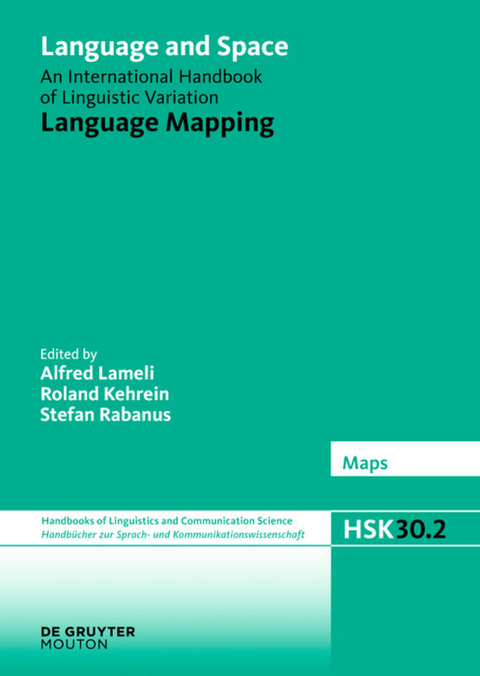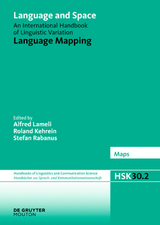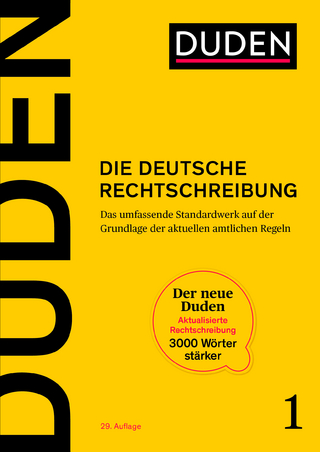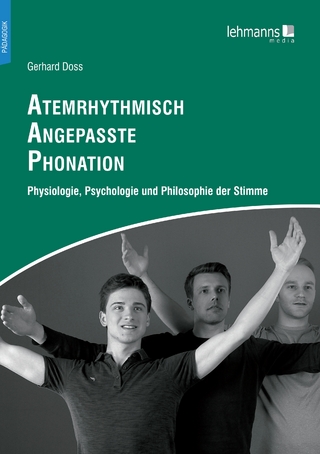Language Mapping
Part I. Part II: Maps
Seiten
2010
de Gruyter Mouton (Verlag)
978-3-11-019609-2 (ISBN)
de Gruyter Mouton (Verlag)
978-3-11-019609-2 (ISBN)
The dimensions of time and space fundamentally cause and shape the variability of all human language. To reduce investigation of this insight to manageable proportions, researchers have traditionally concentrated on the "deepest" dialects. But it is increasingly apparent that, although most people still speak with a distinct regional coloring, the new mobility of speakers in recently industrialized and postindustrial societies and the efflorescence of communication technologies cannot be ignored. This has given rise to a reconsideration of the relationship between geographical place and cultural space, and the fundamental link between language and a spatially bounded territory. Language and Space: An International Handbook of Linguistic Variation seeks to take full account of these developments in a comprehensive, theoretically rich way. The introductory volume examines the concept of space and linguistic approaches to it, the structure and dynamics of language spaces, and relevant research methods. A second volume offers the first thorough exploration of the interplay between linguistic investigation and cartography, and subsequent volumes uniformly document the state of research into the spatial dimension of particular language groupings.
The Handbook of Language Mapping aims to explore the core methodological and theoretical approaches of linguistic cartography. In both empirical and theoretical linguistics, the spatial variation of language is of increasing interest and the visualization of language in space is therefore also of growing significance. It is the precondition for correct data interpretation. But how does it work? What has to be considered when drawing a map? And how has the problem been tackled so far? This book provides answers to such questions by taking a closer look at the theoretical issues surrounding cartography and at the concrete practice of mapping. The fundamental issues raised are addressed particularly well, since linguistic geography is not only one of the domains with a lengthy tradition, it is also one of the most progressive fields in linguistics. At the same time, because of their visual primacy, linguistic maps directly confront the challenges of human perception and aesthetics. In this context, envisioning the fruits of language mapping is a fascinating and inspiring endeavor, not just for experts. With its accessible texts and wealth of full-color images, the handbook not only represents a comprehensive manual serving the interests of a variety of readers, it also fills a gap in the ongoing linguistic discourse.
The Handbook of Language Mapping aims to explore the core methodological and theoretical approaches of linguistic cartography. In both empirical and theoretical linguistics, the spatial variation of language is of increasing interest and the visualization of language in space is therefore also of growing significance. It is the precondition for correct data interpretation. But how does it work? What has to be considered when drawing a map? And how has the problem been tackled so far? This book provides answers to such questions by taking a closer look at the theoretical issues surrounding cartography and at the concrete practice of mapping. The fundamental issues raised are addressed particularly well, since linguistic geography is not only one of the domains with a lengthy tradition, it is also one of the most progressive fields in linguistics. At the same time, because of their visual primacy, linguistic maps directly confront the challenges of human perception and aesthetics. In this context, envisioning the fruits of language mapping is a fascinating and inspiring endeavor, not just for experts. With its accessible texts and wealth of full-color images, the handbook not only represents a comprehensive manual serving the interests of a variety of readers, it also fills a gap in the ongoing linguistic discourse.
Alfred Lameli andRoland Kehrein, Philipps-Universität Marburg, Germany; Stefan Rabanus,Università degli Studi di Verona, Italy.
| Erscheint lt. Verlag | 21.12.2010 |
|---|---|
| Reihe/Serie | Handbücher zur Sprach- und Kommunikationswissenschaft / Handbooks of Linguistics and Communication Science [HSK] ; 30/2 |
| Language and Space ; Volume 2 | |
| Zusatzinfo | 80 b/w and 150 col. ill., 35 b/w tbl. |
| Verlagsort | Berlin/Boston |
| Sprache | englisch |
| Maße | 170 x 240 mm |
| Gewicht | 1254 g |
| Themenwelt | Geisteswissenschaften ► Sprach- / Literaturwissenschaft ► Sprachwissenschaft |
| Sozialwissenschaften ► Kommunikation / Medien ► Kommunikationswissenschaft | |
| Schlagworte | Dialectology • Dialectology; Sociolinguistics • Dialektologie • Sociolinguistics • Soziolinguistik • Sprachwandel |
| ISBN-10 | 3-11-019609-3 / 3110196093 |
| ISBN-13 | 978-3-11-019609-2 / 9783110196092 |
| Zustand | Neuware |
| Informationen gemäß Produktsicherheitsverordnung (GPSR) | |
| Haben Sie eine Frage zum Produkt? |
Mehr entdecken
aus dem Bereich
aus dem Bereich
Das umfassende Standardwerk auf der Grundlage der aktuellen amtlichen …
Buch | Hardcover (2024)
Duden (Cornelsen Verlag)
35,00 €
Physiologie, Psychologie und Philosophie der Stimme
Buch | Softcover (2024)
Lehmanns Media (Verlag)
29,95 €
und wie man sie vermeidet
Buch | Softcover (2022)
C.H.Beck (Verlag)
14,00 €




